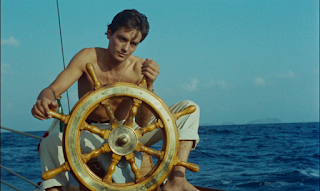Elsa and her two sisters are rescued by George Adamson, a game warden, after he was forced to shoot their mother in self defence. He brings the three cubs home to his wife Joy, and they begin to care for them. Eventually two of the cubs are sent to the Rotterdam zoo, but the couple decide to keep their favourite, Elsa. Joy is determined to release Elsa into the wild so she can live a free life. However having been raised by humans, Elsa is unable to hunt for herself, and so the Adamson's set out to train her as best they can. Through a series of trial and error they succeed in helping Elsa learn to hunt.
Her final test is to find a mate, and after leaving her to fend for herself, the Adamson's are delighted when they return to find Elsa with three cubs of her own.
Born Free was based on the hugely successful book of the same name written by the real Joy Adamson. The relationship she had had with Elsa was regarded as a scientific marvel and completely changed the way people viewed lions. All the proceeds Joy made from her books and the film, she put into her conservation trust, named after her beloved Elsa.
In the film Joy and George were played by real life couple, Virginia McKenna and Bill Travers. Determined to make the film as authentic as possible, Virginia and Bill, insisted on working with real lions, whilst the film crew remained safe behind wire cages. This gave the film a greater feel of realism and with it's evocative score by John Barry, it remains a beautiful and moving piece of cinema.
Virginia and Bill were so inspired by their time with the lions that they later formed the Born Free Foundation, dedicated to saving animals and keeping them wild. One of their first missions was to successful rehabilitate the three lions used during the film. Girl, Boy and Ugas were sent to live with George Adamson who then released them back into the wild.
 |
| Virginia McKenna, George Adamson, Bill Travers, Joy Adamson |



























